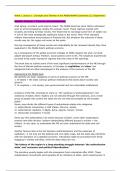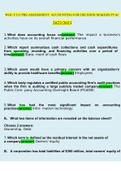Samenvatting
Summary ECONOMIES OF THE MIDDLE EAST readings Cammett and Hanieh week 1/6 (blok 1)
This is a summary from the assigned readings given for the course 'Economies of the Modern Middle East' at Leiden University. It is a detailed summary, from the readings of block 1: week 1/6 of the course. The necessary readings contains parts of Cammetts: A political economy of the Middle East a...
[Meer zien]














